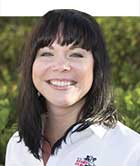
How do you know where you're going if you don't know where you are? Tracking various aspects of your dairy business is one of the biggest contributors to your financial success.
The reasons to keep records are to provide clarity, measure progress and plan for the future. The three overarching categories to maintain records of are inventory, finances and production records. You don't need an accounting degree to keep track of what you own, how much you spend or get paid, and what your cows and crops produce each year. Whether it's a notebook and pencil, computer spreadsheet or more advanced software program, as long as you're tracking your business you'll see the benefits and have clarity.
Let's start with two small steps toward record keeping and tracking:
Expense categories
Setting some basic expense categories for your farm lets you see your costs of doing business. You don't want to be surprised when you see your tax statement at the end of the year. Expense categories empower you; in fact, you may even find that you're doing better than you originally thought at controlling costs! You may feel like your business just started making more money, all because you took a few minutes to look at your numbers on paper.
Production records
Keeping production records of the milk you produce, the heifers you raise and the crops you harvest month-by-month and year-by-year paints you a picture of the business. In a moment when you may feel like things aren't going well, you can look at the numbers and may realize that you're producing more milk than this time last year. That's a win for any dairy farm.
Don't overcomplicate your record keeping and tracking. The idea is for you to have a tool to see, in black and white, the facts of your business, plan improvements and make good management decisions.
 The author is the special publications editor, responsible for books, plans, distribution of the e-newsletter and various internal communication pieces. She grew up on a 60-cow dairy in northwest Wisconsin, and is a graduate of University of Wisconsin–Madison with a degree in life sciences communications.
The author is the special publications editor, responsible for books, plans, distribution of the e-newsletter and various internal communication pieces. She grew up on a 60-cow dairy in northwest Wisconsin, and is a graduate of University of Wisconsin–Madison with a degree in life sciences communications. 







